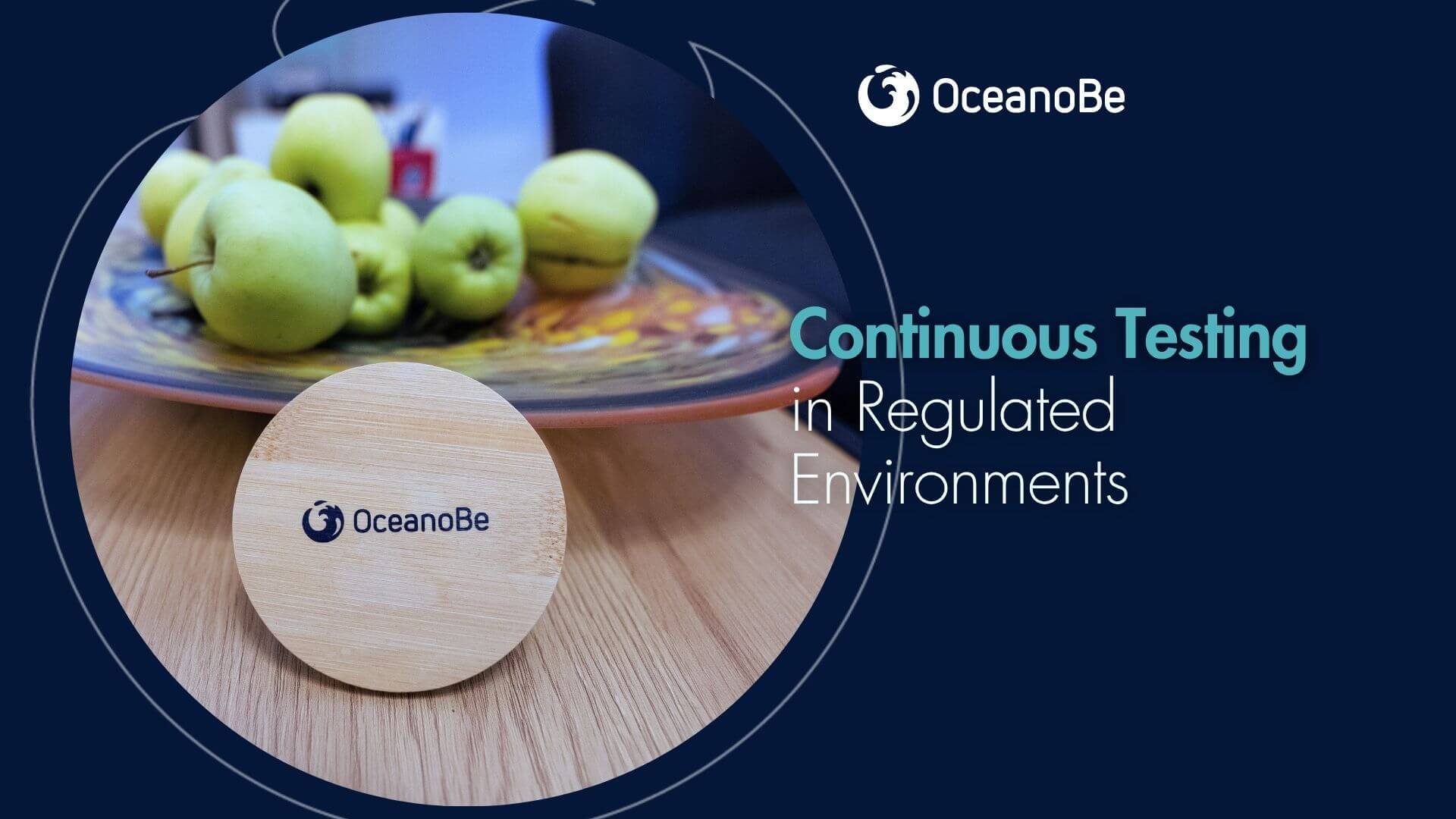Continuous Testing in Regulated Environments
Balancing Speed and Compliance
Balancing Speed and Compliance

How to embed automated QA into CI/CD pipelines for banks and payment providers — without compromising on auditability or trust.
In traditional banking, compliance was a gate at the end of the process. In modern fintech, it’s a continuous requirement — one that must evolve as fast as your codebase.
For teams building digital banking platforms and payment systems, the challenge is clear:
How do we ship updates rapidly, while proving to auditors and regulators that every release is verified, traceable, and compliant?
At OceanoBe, we’ve built QA pipelines for enterprise-level fintech clients where automation doesn’t stop at testing — it extends to audit evidence, traceability, and risk reporting. Here’s how.
Unlike most SaaS systems, banking and payments software operates under strict regulatory supervision. Every release can potentially impact customer trust, data privacy, or financial integrity.
Key frameworks influencing QA strategy include:
Continuous testing in this context isn’t optional. It’s part of proving that your CI/CD process itself is compliant.
In high-frequency delivery environments, testing must happen at the same speed as deployment.
Here’s what a compliance-aware CI/CD pipeline looks like:
stage: test script: - mvn clean test - allure generate --clean artifacts: paths: - reports/
This setup ensures every commit triggers:
Each artifact becomes part of an immutable audit trail, stored for compliance reviews.
One of the biggest regulatory challenges is proving that each business requirement has been tested and validated.
To achieve this, OceanoBe integrates test management tools directly with source control and CI pipelines (e.g., TestRail + Jira + GitLab CI).
Each user story includes a traceability matrix linking:
Requirements → Test Cases → Test Results → Release Artifacts
Automated scripts tag every pipeline run with commit IDs, build numbers, and environment data.
Example log output for auditors:
[TRACEABILITY] Requirement: PSD2-SCA-001
[TestCase] test_sca_flow_valid
[Build] #1412 | Commit a6d3f9 | Environment: preprod
[Result] PASSED | Evidence: /reports/allure/psd2_sca_001.html
This approach ensures both speed for developers and confidence for compliance officers.
Beyond functionality, fintech QA must validate security posture continuously. That means embedding:
Static Application Security Testing (SAST) for code vulnerabilities.
Dynamic Application Security Testing (DAST) for runtime validation.
Dependency checks (e.g., OWASP Dependency Check, Snyk).
Data protection tests for GDPR and PCI DSS alignment.
These tests run automatically in every pipeline. Failures stop deployment until the issue is resolved — ensuring compliance gates are enforced by code, not paperwork.
Example: GitLab CI compliance stage
compliance-audit: stage: compliance-audit script: - snyk test - owasp-check --fail-on-high allow_failure: false
This model shifts compliance left, embedding it directly into development workflows.
Regulated environments require auditable proof for every release — traditionally a manual, time-consuming task. We automate that, too.
Each CI/CD run generates:
Signed test reports
Security scan summaries
Change logs with timestamps
Reviewer and approver signatures (via CI metadata)
All are stored in a versioned compliance repository that auditors can review at any point.
The result? Full transparency, zero slowdown.
The key insight: speed and compliance are not opposites. When automation is built to include governance and traceability, compliance becomes a feature, not a blocker.
At OceanoBe, we view continuous testing as a compliance enabler — it allows banks and payment providers to move fast, iterate safely, and stay always audit-ready. Because in fintech, every deployment isn’t just a delivery — it’s a statement of trust.
Continuous testing in regulated environments is about precision and predictability. By embedding QA, security, and audit automation directly into CI/CD pipelines, organizations can achieve both engineering velocity and regulatory confidence. In banking, trust is earned with every transaction — and validated with every build.